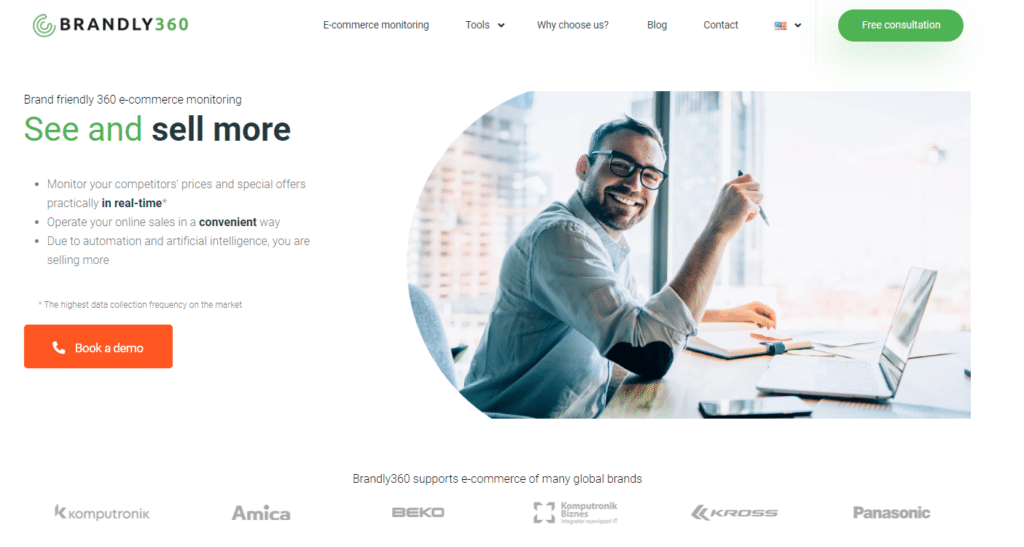Target pricing is a pricing strategy that focuses on setting a price point for a product or service that will appeal to customers and still provide a reasonable profit for the business. The target price is usually selected based on factors such as the cost of the product or service, competitors’ prices, customers’ perceived value of the product or service, and the desired profit margin.
This strategy is often used by businesses that are introducing a new product or service to the market and need to determine a selling price that will generate sales as well as profits. It can also be applied when a company is entering a new market, needs to adjust prices to remain competitive, or is introducing an improved version of an existing product or service.
Target pricing requires proactive cost planning and extensive market research to identify the price points that will make the product or service attractive to customers.
In this article, we will discuss the process of setting a target price and the benefits of using this pricing strategy. We will also provide examples of how it can be employed successfully in different industries and markets.
Key Takeaways
- Target pricing is a pricing strategy that sets a price point for a product or service that is appealing to customers and still provides a reasonable profit margin for the business.
- Extensive market research is required to identify the competitive market price points that will make the product or service meet customer expectations. The target price is determined based on factors such as production costs, competitors’ prices, customers’ perceived value, and desired profit margins.
- Benefits of target pricing include higher profitability, improved customer perception, increased sales volume, flexibility, and reduced risk.
- To implement a successful target pricing strategy, businesses should do their research, consider a range of prices, monitor competition closely, adjust to changing conditions, and be aware of local regulations.
- Brandly360 can help businesses plan and execute any strategy by offering real-time insights into competitors’ prices and current market conditions, enabling automated price adjustments, and providing insights into product distribution and pricing guidelines.
Setting a Target Price
The process of setting a target selling price begins with researching competitors’ prices and the customer’s perception of value. Companies should examine what customers are willing to pay for similar products or services, as well as the cost of production, distribution, advertising, and other related expenses. All these factors need to be taken into account when determining an appropriate target price.
Once the company has determined its desired profit margin and target costing, it can use this information to calculate a competitive price that meets both customer needs and business goals. For example, if a product has a production cost of $10 and the company wants to make a 20% profit on each sale, then it would set its target price at $12 ($10 + $2 = $12). This move provides enough money for the business to cover costs while still offering customers an attractive final selling price point.
Market research data is also crucial to determine whether customers will respond positively to specific pricing points and adjust accordingly. Companies should consider running surveys or focus groups to gain insight into how customers feel about various pricing levels before making decisions regarding their own target prices.
Want to get set up with competitor monitoring, price tracking and even more?
Book a free demo to monitor any e-commerce competitor pricing and get instant info of important price movements and more!
Advantages of Target Pricing

There are several benefits to using a target pricing strategy. The most significant advantages include the following:
- Increased Profitability: By setting a price that covers a target cost and allows for a reasonable profit margin, businesses can be positive that they are maximizing their profits from each sale. This aspect is especially important in competitive markets, as it ensures the company isn’t selling its products or services at too low of a price point.
- Improved Customer Perception: Setting prices based on customer needs and perceived value helps create an impression of quality and trustworthiness in the eyes of customers. Knowing that the product or service is being offered at a fair selling price can encourage loyalty and increase sales over time.
- Increased Sales Volume: Target pricing allows companies to remain competitive without sacrificing profitability. It means they can attract more customers who may have otherwise gone to competitors with lower prices if those were not profitable for them.
- Flexibility: Target pricing gives businesses greater flexibility when adjusting prices due to changing market conditions, fluctuating target costing, or economic trends. If competition increases or production target costs go up, companies can adjust their target prices accordingly while remaining profitable.
- Reduced Risk: Finally, by using market research data to determine appropriate prices, businesses can minimize the risk associated with making incorrect pricing decisions which could lead to lost revenue and decreased profits down the line.
Disadvantages of Target Pricing
Despite its advantages, there are some potential drawbacks to using a target pricing strategy. One of the main downsides is that it can be difficult to accurately determine what customers will perceive as an attractive price point. If the company sets its prices too high, it might not generate enough sales volume to cover costs and remain profitable; conversely, if prices are set too low, then profits may suffer.
Additionally, businesses may need to adjust their target prices frequently due to changing customer preferences, market conditions, or target costs. Doing so requires additional research and can lead to increased costs if done improperly or without sufficient data.
Finally, companies must also consider how competitors will react when they adjust their pricing strategies in order to stay competitive and maximize profits.
Tips for Implementing a Target Pricing Strategy
- Do your research: Before setting a target price, conducting extensive market research is vital to identify the most appropriate pricing points for your product or service. It includes examining competitors’ prices, customer perceptions of value, and a target cost of production and distribution. Our price and availability tracking tool can help you stay on top of changes in the market.
- Consider a range of prices: When determining target prices, businesses should consider offering different tiers or versions of their products at various price points to appeal to different market segments. This situation will help ensure that customers have options when making purchasing decisions based on their budgets.
- Monitor competition closely: It is essential for businesses to continually monitor competitors’ prices to remain competitive and adjust their own pricing accordingly if needed. Doing so can help prevent significant losses due to incorrect pricing decisions and keep profits up over time. Our tool can help you track pricing changes across the market.
- Adjust to changing conditions: Target pricing provides companies with greater flexibility than other strategies, such as fixed pricing. Thanks to it, they can easily adjust their prices when economic or market conditions, target market demand, or target costing change without having too much impact on profitability or customer perception of value.
- Be aware of local regulations: Companies must also be mindful of local laws regarding pricing before implementing any strategy. Certain jurisdictions may restrict certain types of competitive pricing practices, such as “predatory pricing,” which could result in penalties or fines.
How Can Brandly360 Help You?
Brandly360 can help businesses plan and execute a successful target pricing strategy. Our platform offers real-time insights into competitors’ prices and current market conditions so companies can make informed decisions about their own pricing points.

Moreover, we enable you to take control of your pricing strategy with automated selling price adjustments that ensure you’re always competitive in the market. You will also have an insight into where your products are being sold and whether your distributors and retailers are keeping to your pricing guidelines.
Contact us today to learn more about how our platform can help you succeed.
Final Notes
Target pricing is an effective pricing strategy that enables businesses to set prices that meet customer needs, cover target costing, and generate reasonable profits. However, this strategy requires extensive market research and consideration of various factors, such as cost of production, competitors’ prices, customers’ perception of value, and desired profit margin.
By following the tips outlined in this article and utilizing our platform for price tracking and analysis, companies can easily implement a target pricing strategy that will help them maximize their revenue while still offering customers attractive prices.
Want to get set up with competitor monitoring, price tracking and even more?
Book a free demo to monitor any e-commerce competitor pricing and get instant info of important price movements and more!

Manager with experience in leading team of software developers and testers during implementation of internal and external IT projects. Ceo of Brandly360.com.


